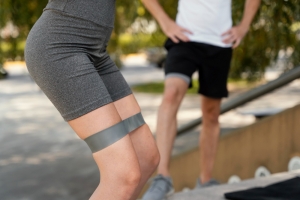Lacing your work shoes properly is essential for healthy feet, especially in the hot climate of the United Arab Emirates. High temperatures, long work shifts, dusty and humid conditions leave feet vulnerable. Improper pressure distribution can lead to chafing of the foot, and subsequently to blisters, nail plate problems, joint inflammation and chronic fatigue. The manufacturers of TALAN safety shoes told us how to lace up the boots correctly to make the shift at work as comfortable as possible and without harm to the feet.
Why is it important to tie work shoes correctly?
Work shoes are designed to protect your feet, but if they aren't tied correctly, they can cause discomfort and lead to injury. Here are a few common problems that result from poor fitting:
- Calluses and corns. If the shoe fits too loosely, the foot rubs against the inside of the shoe.
- Pressure on the toes and arch of the foot. Overly tight laces interfere with blood flow, causing numbness and discomfort.
- Risk of sprains. If the laces are not properly tightened, the foot can move inside the shoe, there is a chance of spraining it when walking fast or making unfortunate movements while lifting and carrying heavy objects.
- Increased sweating and overheating. This is especially important in the UAE - improperly fastened shoes impede air circulation, creating a greenhouse effect.
Ways of lacing work shoes
There are several techniques for tying work boots, each suitable for certain conditions and foot types.
|
Lacing method |
Suitable for whom |
Benefits |
|
Classic straight |
For people with normal feet |
Even pressure distribution, comfort |
|
Crossed |
For wide feet or high instep |
Improves fixation, reduces pressure |
|
Zigzag |
For people suffering from edema |
Relieves lifting pressure, improves air circulation |
|
Loop skipping |
For sensitive areas of the foot |
Reduces pressure in certain areas, prevents blisters |
Lacing tips from TALAN experts
The choice of lacing method depends on the individual characteristics of the foot and the nature of the work. Also take into account the material of the shoe and the degree of stress to which the feet are subjected.
- Use the right laces. They should be strong but flexible to distribute pressure evenly and not stretch over time. Synthetic fiber laces with a textured surface that prevents unintentional untying are best.
- Start lacing from the toe to the ankle. This helps to lock the foot in its natural position and prevent it from shifting inside the shoe. If the lower loops are skipped or over-tightened, uneven pressure can be created, causing pain.
- Make sure that the tension is even. The laces should not be too tight or too loose. A good way to check the lacing is to insert your finger under the laces at the instep of the foot. If it passes through with little force, the tension is optimal.
- Use special lacing techniques depending on your foot type. For example, if you have a high instep, it is better to use the "skip loops" method to reduce pressure on that part of the foot. And if you have a wide foot, a zigzag lacing system can provide extra space.
- Consider the type of footwear and the nature of the work. For example, for construction sites where maximum fixation is required, cross-lacing is recommended. And for those who work in hot conditions, it is important to leave small "air pockets" between the laces for improved ventilation.
Manufacturers of certified TALAN work shoes advise to combine proper lacing with individually selected insoles - this helps to significantly reduce the load on the foot and reduce the risk of blisters. Remember that for comfortable work in a workshop, on a construction site or in production, you should also be concerned about the choice of quality certified safety shoes. The UAE TALAN range of work shoes can be found at talansafetyshoes.com.






